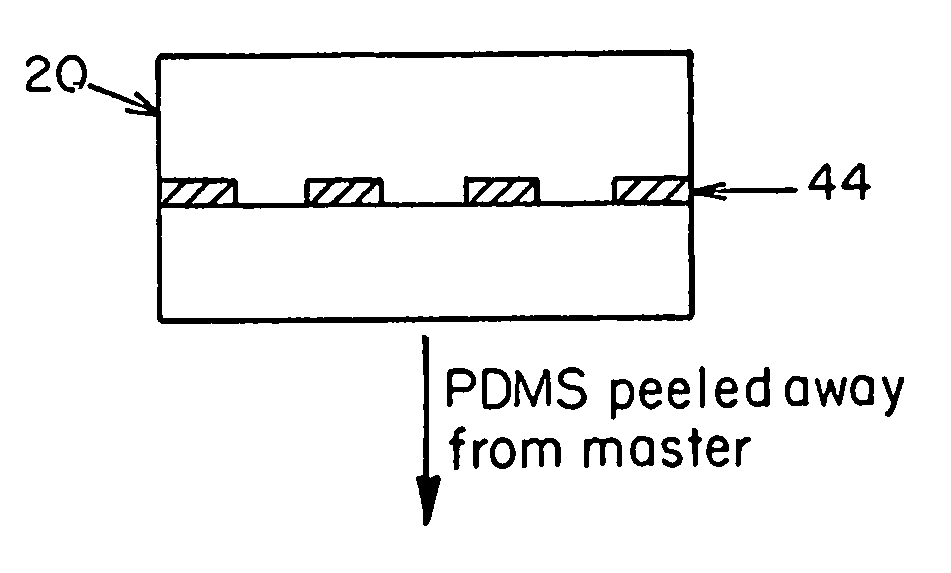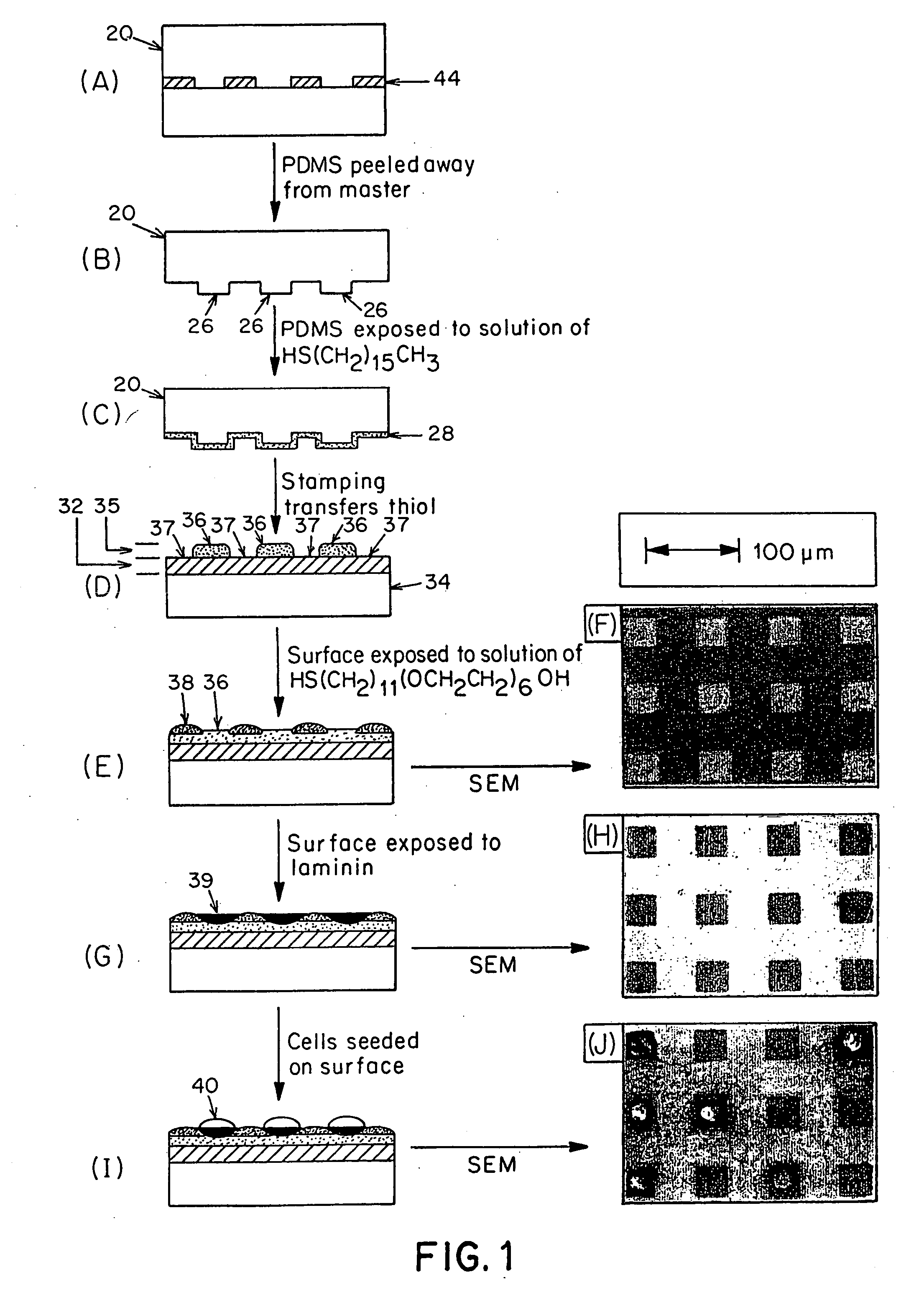Device containing cytophilic islands that adhere cells separated by cytophobic regions
a technology of cytophilic islands and cells, applied in the direction of cell culture supports/coatings, immobilised enzymes, chemical vapor deposition coatings, etc., can solve the problems of low surface permeability, low surface permeability, and low surface permeability, and achieve the effect of promoting or preventing cell-cell conta
- Summary
- Abstract
- Description
- Claims
- Application Information
AI Technical Summary
Benefits of technology
Problems solved by technology
Method used
Image
Examples
example 1
Preparing a Mold and Stamp
[0097] A mold according to the present invention was fabricated. A template consisting of an exposed and developed photoresist pattern on silicon is prepared (This type of fabrication is described in any conventional photolithography text, such as Introduction to Microelectronic Fabrication, by Richard C. Jaeger, Gerold W. Neudeck and Robert F. Pierret, eds., Addison-Wesley, 1989). Templates such as electron microscopy grids or other corrugated materials may also be used. The template is placed in a container such as a petri dish. A 10:1 (w:w or v:v) mixture of PDMS-Sylgard Silicone Elastomer 184 and Sylgard Curing Agent 184 (Dow Coming Corp., Midland, Mich.) was poured into the petri dish. It was not necessary to put the mixture of PDMS-elastomer and curing agent under vacuum to remove dissolved dioxygen. The PDMS cured at room temperature in the laboratory ambient for 30 to 60 min. This cure was followed by additional curing at 65° C. for approximately o...
example 2
Preparation of Plates with Metallic Surfaces
[0098] Gold films (˜2000 A thick) were prepared by electron-beam evaporation of gold (Materials Research Corp., Orangeburg, N.Y.; 99.999%) onto single-crystal silicon (100) test wafers (Silicon Sense, Nashua, N.H.; 100 mm dia., ˜500 μm thick) that had been precoated with a film of titanium (Johnson Mathey, 99.99%; ˜50 A thick) that acted as an adhesion promoter between the silicon oxide and the gold. The silicon wafers coated with gold were fractured into square plates (˜2 cm×2 cm) and used in the formation of the various types of patterned SAM plates.
example 3
Preparing a Patterned Plate with a Grid Pattern
[0099] A stamp fabricated in accordance with Example 1 was fabricated. The stamp was fabricated so as to have a linear indentation pattern contiguous with a liner stamping surface pattern. That is, the stamp had an array of indentational lines separating stamping surface lines. The surface was coated with hexadecanethiol in ethanol using a cotton swab. The stamp was applied to a smooth gold surface, and removed. The resultant pattern included parallel SAM lines of 2 microns in width. After removal of the stamp, the stamping surface was re-coated and rotated approximately 45° to a second orientation, and re-applied to the surface. A grid pattern resulted.
PUM
| Property | Measurement | Unit |
|---|---|---|
| area | aaaaa | aaaaa |
| area | aaaaa | aaaaa |
| time | aaaaa | aaaaa |
Abstract
Description
Claims
Application Information
 Login to View More
Login to View More - R&D
- Intellectual Property
- Life Sciences
- Materials
- Tech Scout
- Unparalleled Data Quality
- Higher Quality Content
- 60% Fewer Hallucinations
Browse by: Latest US Patents, China's latest patents, Technical Efficacy Thesaurus, Application Domain, Technology Topic, Popular Technical Reports.
© 2025 PatSnap. All rights reserved.Legal|Privacy policy|Modern Slavery Act Transparency Statement|Sitemap|About US| Contact US: help@patsnap.com


